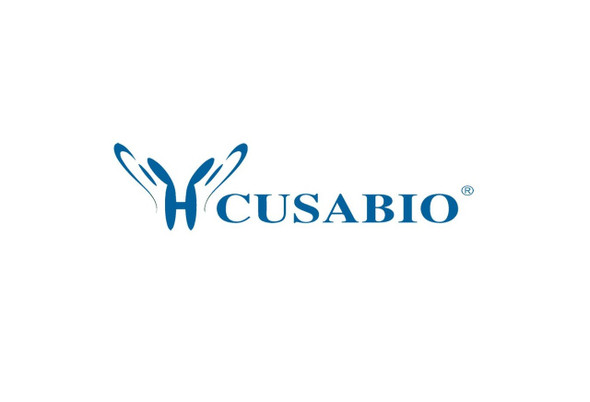Cusabio Virus & Bacteria Recombinants
Recombinant Human T-cell leukemia virus 1 Envelope glycoprotein gp62 (env), partial | CSB-EP361037HQJa2
- SKU:
- CSB-EP361037HQJa2
- Availability:
- 13 - 23 Working Days
Description
Recombinant Human T-cell leukemia virus 1 Envelope glycoprotein gp62 (env), partial | CSB-EP361037HQJa2 | Cusabio
Alternative Name(s): Env polyprotein
Gene Names: env
Research Areas: Metabolism
Organism: Human T-cell leukemia virus 1 (strain Japan ATK-1 subtype A) (HTLV-1)
AA Sequence: DYSPSCCTLTIGVSSYHSKPCNPAQPVCSWTLDLLALSADQALQPPCPNLVSYSSYHATYSLYLFPHWTKKPNRNGGGYYSASYSDPCSLKCPYLGCQSWTCPYTGAVSSPYWKFQHDVNFTQEVSRLNINLHFSKCGFPFSLLVDAPGYDPIWFLNTEPSQLPPTAPPLLPHSNLDHILEPSIPWKSKLLTLVQLTLQSTNYTCIVCIDRASLSTWHVLYSPNVSVPSSSSTPLLYPSLALPAPHLTLPFNWTHCFDPQIQAIVSSPCHNSLILPPFSLSPVPTLGSRSRR
Source: E.coli
Tag Info: N-terminal 6xHis-SUMO-tagged
Expression Region: 21-312aa
Sequence Info: Partial
MW: 36.0 kDa
Purity: Greater than 85% as determined by SDS-PAGE.
Relevance: The surface protein attaches the virus to the host cell by binding to its receptor. This interaction triggers the refolding of the transmembrane protein and is thought to activate its fusogenic potential by unmasking its fusion peptide. Fusion occurs at the host cell plasma membrane .The transmembrane protein acts as a class I viral fusion protein. Under the current model, the protein has at least 3 conformational states: pre-fusion native state, pre-hairpin intermediate state, and post-fusion hairpin state. During viral and target cell membrane fusion, the coiled coil regions assume a trimer-of-hairpins structure, positioning the fusion peptide in close proximity to the C-terminal region of the ectodomain. The formation of this structure appears to drive apposition and subsequent fusion of viral and target cell membranes. Membranes fusion leads to delivery of the nucleocapsid into the cytoplasm.
Reference: "Human adult T-cell leukemia virus: complete nucleotide sequence of the provirus genome integrated in leukemia cell DNA." Seiki M., Hattori S., Hirayama Y., Yoshida M.C. Proc. Natl. Acad. Sci. U.S.A. 80:3618-3622(1983)
Storage: The shelf life is related to many factors, storage state, buffer ingredients, storage temperature and the stability of the protein itself. Generally, the shelf life of liquid form is 6 months at -20?/-80?. The shelf life of lyophilized form is 12 months at -20?/-80?.
Notes: Repeated freezing and thawing is not recommended. Store working aliquots at 4? for up to one week.
Function:
Involvement in disease:
Subcellular Location:
Protein Families:
Tissue Specificity:
Paythway:
Form: Liquid or Lyophilized powder
Buffer: If the delivery form is liquid, the default storage buffer is Tris/PBS-based buffer, 5%-50% glycerol. If the delivery form is lyophilized powder, the buffer before lyophilization is Tris/PBS-based buffer, 6% Trehalose, pH 8.0.
Reconstitution: We recommend that this vial be briefly centrifuged prior to opening to bring the contents to the bottom. Please reconstitute protein in deionized sterile water to a concentration of 0.1-1.0 mg/mL.We recommend to add 5-50% of glycerol (final concentration) and aliquot for long-term storage at -20?/-80?. Our default final concentration of glycerol is 50%. Customers could use it as reference.
Uniprot ID: P03381
HGNC Database Link: N/A
UniGene Database Link: N/A
KEGG Database Link: N/A
STRING Database Link: N/A
OMIM Database Link: N/A






